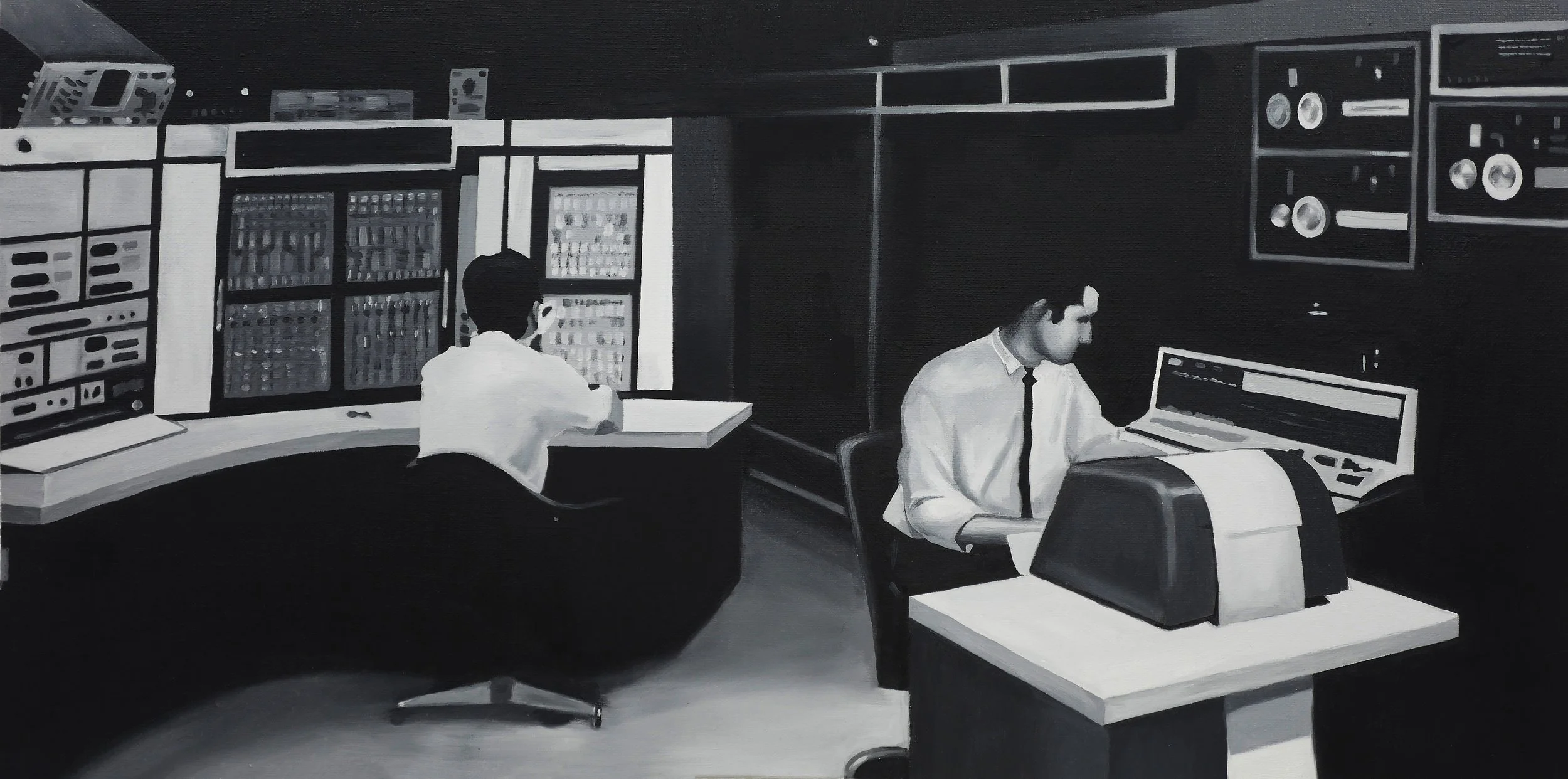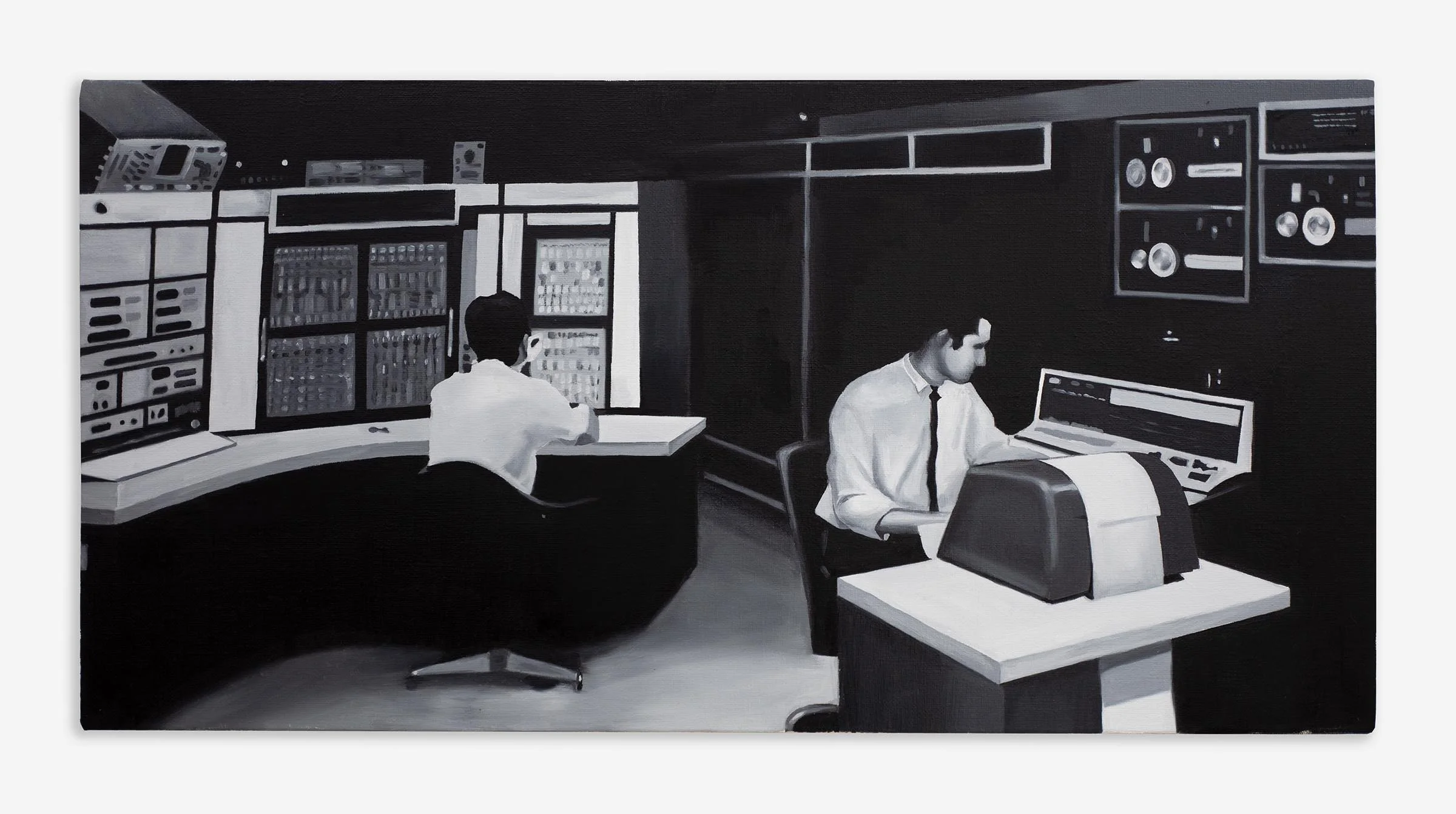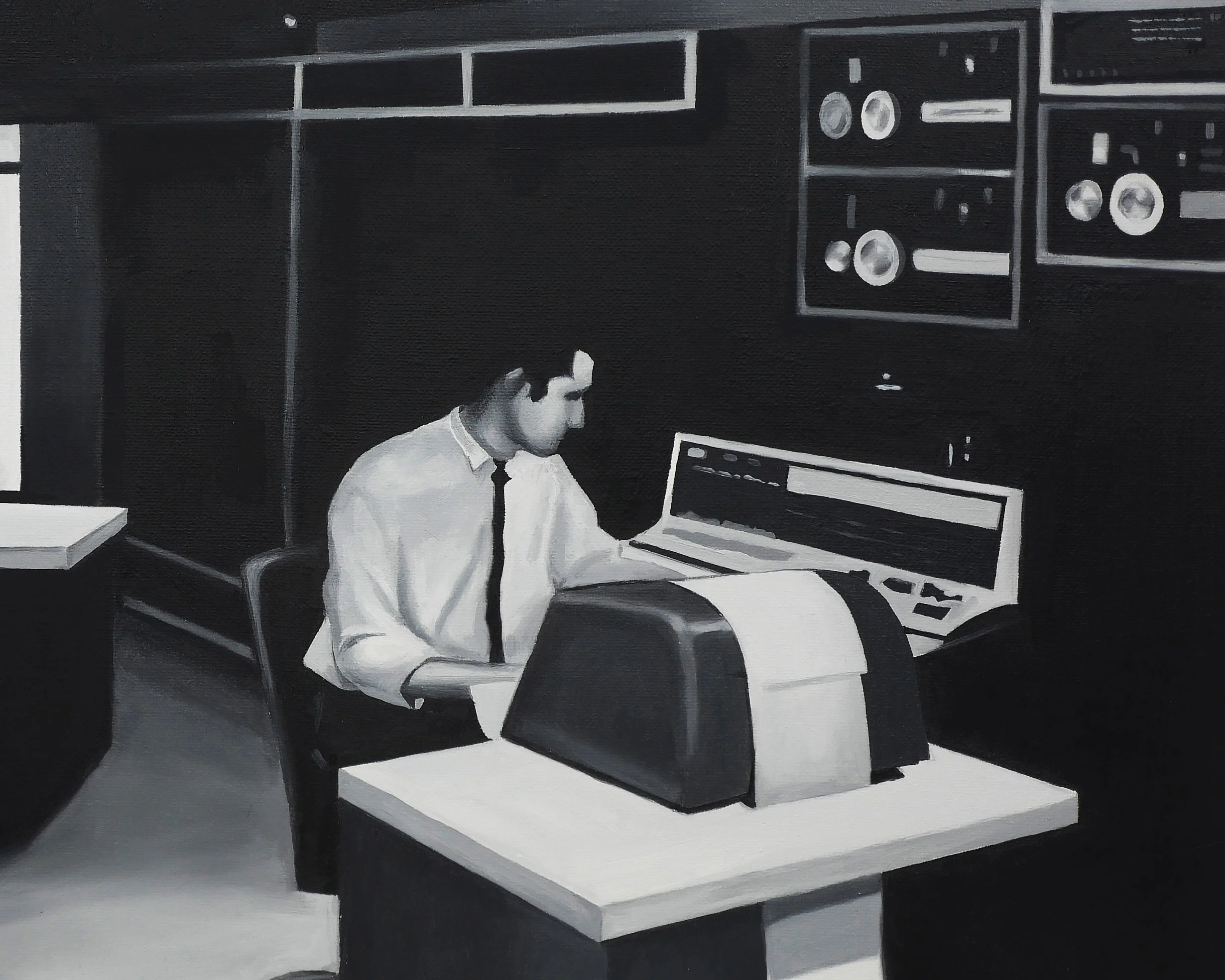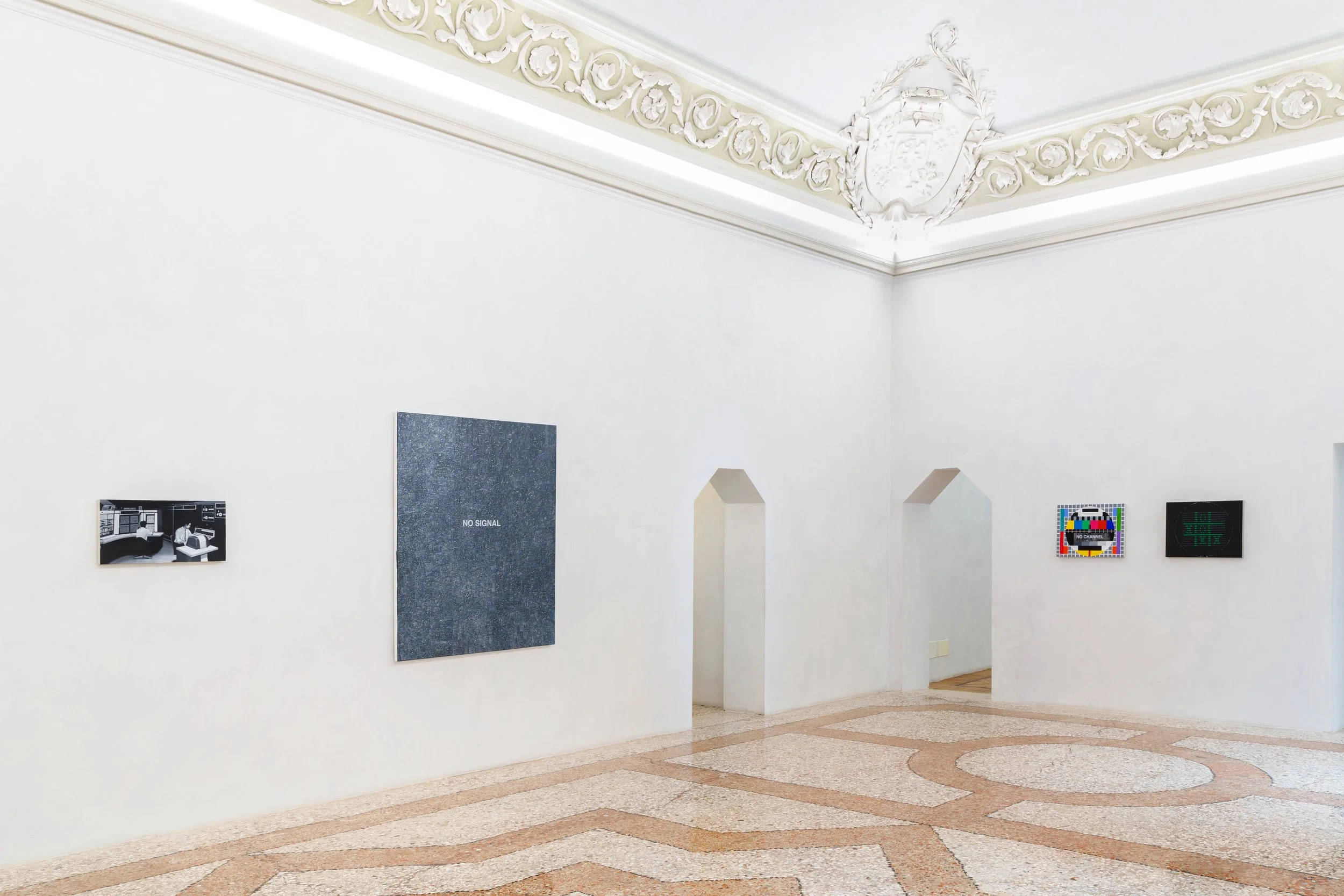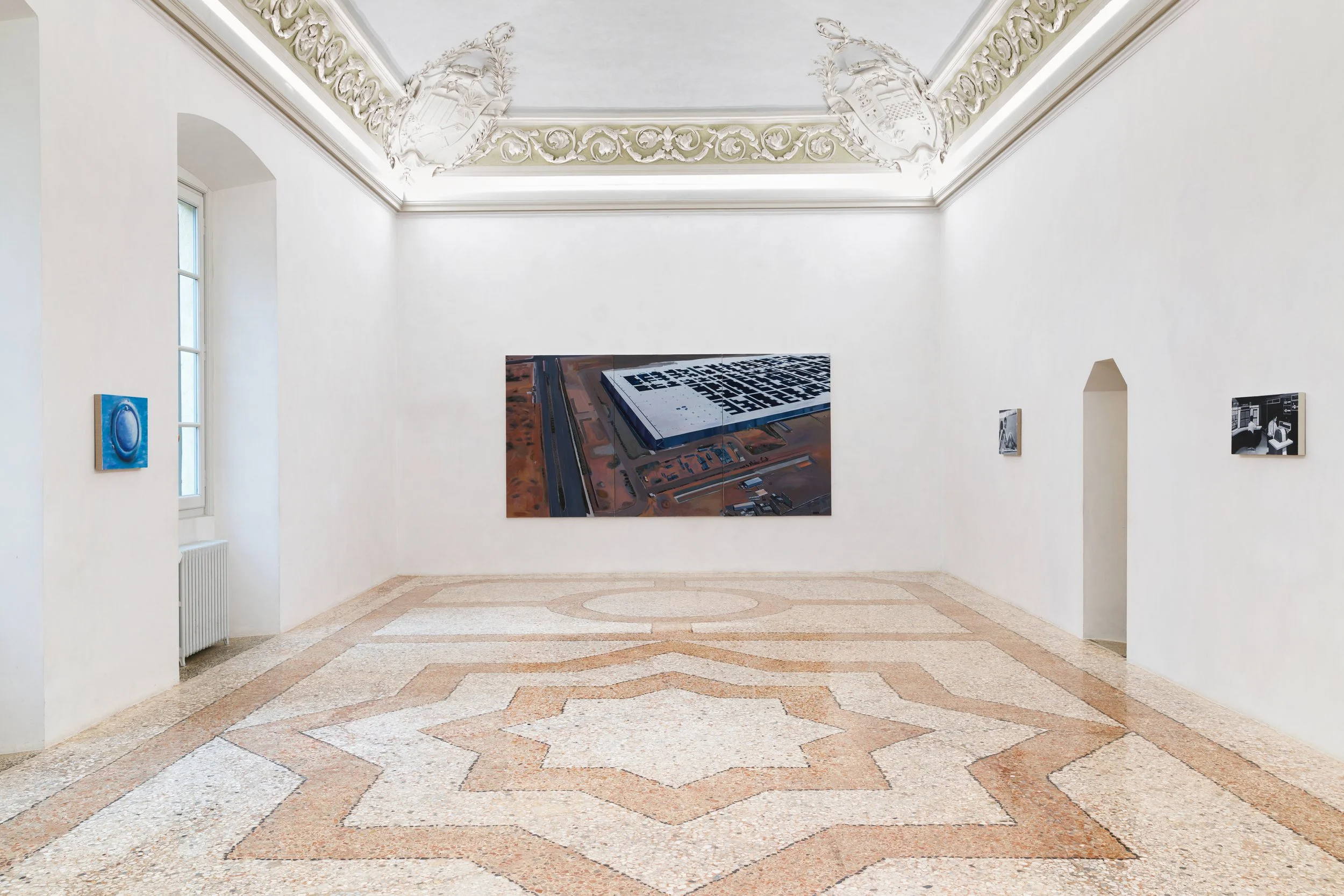DEC's PDP-10, 2021
DEC's PDP-10, 2021
Oil on linen
31 x 61 cm (12 x 24 in)
DEC's PDP-10 is one of the most influential computers in the history of computing. It was not only a platform for developing many popular applications but also laid the foundation for the infrastructure of the modern internet. As one of the few computers at the time capable of running multi-user environments, the PDP-10 became the first widely used time-sharing system and was a core platform of ARPANET (the precursor to the internet). The ability of modern devices to seamlessly integrate into the global network is due to a shared set of communication standards, protocols, and formats. The innovative contributions of early computers like the PDP-10 in multi-tasking and data processing played a key role in the development of these protocols, providing the technical foundation for the efficient growth of the modern internet and artificial intelligence. Through DEC's PDP-10 (2021), Tan Mu has reintroduced archival photographs of the PDP-10 computing environment, reflecting how this technology has driven the revolution in information exchange and computational power.
Signal, May 5 – June 10, 2022, Peres Projects, Milan
Signal, May 5 – June 10, 2022, Peres Projects, Milan
Signal, May 5 – June 10, 2022, Peres Projects, Milan
Q: You mentioned that this work documents the early concept of computer networking. Could you elaborate on this?
Tan Mu: This piece was inspired by my research into the history of computing, particularly the early forms and operational methods of computers. In the 1960s and 70s, computers were massive, often occupying entire rooms. Their components were large, and running a program or performing a single calculation required multiple operators working in different locations. One of the most significant machines from that era was DEC’s PDP-10, which marked the early stages of networking and the foundational ideas of the internet. At the time, computers did not have screens in the way we understand them today—most input and output were displayed numerically. The machine in the lower right corner of the painting differs entirely from modern displays, reflecting the technical constraints and operational methods of that period. While these early machines were far less powerful than today’s smartphones, they laid the groundwork for modern computing. Through this work, I aimed to capture this historical moment and illustrate the evolution of computers from room-sized machines to portable devices.
Q: How do you perceive the relationship between early computers and modern society?
Tan Mu: The speed and functionality of early computers stand in stark contrast to modern technology. Looking back, these early machines might seem cumbersome and inefficient, yet they provided the foundation for contemporary computing. Through this work, I hope to encourage viewers to reflect on the trajectory of technological progress and recognize how our current conveniences have been built step by step. This contrast also deepens my awareness of the rapid pace and direction of technological advancements.
While creating this piece, I observed something intriguing: Despite the revolutionary changes in computing over the past few decades, aspects of human life—such as clothing, furniture, and everyday objects—have remained surprisingly consistent. The individuals in the painting wear outfits that are not drastically different from what we wear today, and the design of chairs and desks remains quite similar. This contrast fascinates me because it highlights the tension between technological progress and the relative stability of daily human life. Computers have transformed how we work, but the essence of human existence has remained largely unchanged.
Q: This work was exhibited at your 2022 solo show Signal in Milan. What was its significance within the exhibition?
Tan Mu: In the exhibition, this work was placed next to NO SIGNAL (2019), creating both a historical record of early computing technology and a direct dialogue with the audience. When viewers encountered the piece, they often asked, “What is this?”—and that very question and engagement are integral to its meaning.
The juxtaposition of this massive technological device with the static-filled signal loss of NO SIGNAL generated a conversation between two timelines: one charting the evolution of computing and information systems and the other reflecting on the uncertainties brought by rapid technological change. Through painting, I wanted to prompt viewers to contemplate the history of technological advancement and envision the future. This approach—treating each work as a time stamp—allows me to document pivotal historical moments and offer future audiences a space for reflection.
Q: You mentioned that this piece is connected to works such as Deep Blue. Could you expand on that?
Tan Mu: This work, along with Deep Blue and others, forms part of my ongoing exploration of computing technology’s historical trajectory. From the emergence of networking concepts to breakthroughs in artificial intelligence, these pieces chronicle how computing has progressively reshaped our lives.
DEC’s PDP-10 symbolizes the initial formation of the internet, while Deep Blue represents a milestone in artificial intelligence. This thematic timeline continues with my later works on quantum computing, such as Quantum Computer (2020) and Quantum Gaze (2023). Through this series, I aim to illustrate the evolution of computing technology and examine how it continually influences and redefines our world.
